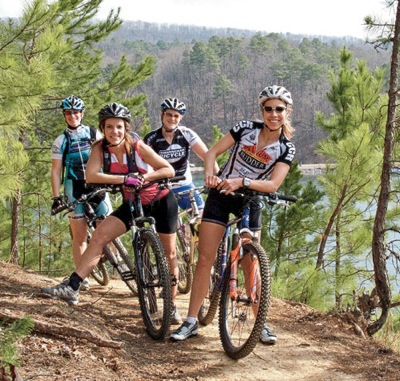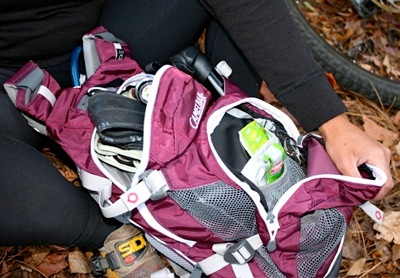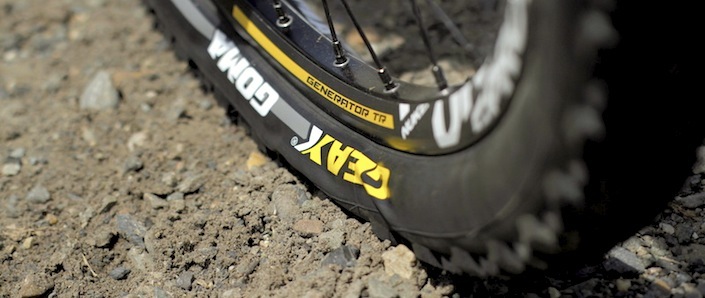
Finding a group of experienced riders and learning the ropes is a great way to progress in mountain biking.
Photo: Kim Cross / Southern Living
Mountain biking is a challenging, thrilling and ultimately enjoyable and fun activity. There are, however, a few pitfalls many stumble into when just starting out. Here are a couple of the most obvious errors beginner riders need to confront. This could also be used as a refresher for the more seasoned trail rider out there.
1. Not looking ahead
The first mistake new riders make is looking down at their front wheel or a spot immediately before it. The problem here is that every obstacle appearing before your front tire is a surprise and you end up riding not far off a state of shock!
"Wherever you look your bike will follow." This is particularly appropriate when riding singletrack. If your eyes lock onto a rock that you want to miss you will hit the rock! The trick is to disregard the rock and concentrate on the path you want to take around it.
SOLUTION: If possible you want to be looking at least 10 metres (30 feet) down the trail, as this gives plenty of time to make decisions about the line you want to take. The trick is to practice ignoring 90% of the obstacles coming up as your riding momentum will take care of those. Keep focused on the line you want to ride and that is where you will end up. Confidence is key.
2. Choosing the wrong gears
Looking ahead allows you to anticipate approaching hills or obstacles and gives you time to shift into an appropriate gear. One of the biggest mistakes beginners make is riding in too hard a gear and therefore a slow cadence.
This creates a couple of problems: Firstly it is just hard work (and hard on your knees) to maintain momentum on any trail other than completely flat or downwards sloping...and forget about singletrack. Most new riders have neither the skill nor the strength to hold a big gear/slow cadence in anything other than ideal circumstances.
The other problem is that by the time you realise you're pedaling too big a gear it is often too late. It only takes a slight hill to sap all your momentum and leave you standing still. A common error is to then force the chain onto an easier or lower cog. The crunching, clanking sound from this is your bike hating you.
SOLUTION: Pedal in a gear that results in a cadence (pedal rotation) of between 80-90 rpm. It is better for your body, allows the same speed for less effort, and the greater drivetrain speed allows the chain to move between cogs smoothly and quietly. It will also set you up for any approaching climbs, and because of less strain on the drivetrain, it is easier to quickly slip into an easier cog and keep momentum.
3. Over-inflated tires
Nothing effects your trail riding more than over-inflated tires, especially when you are developing skills. Over-inflated tires roll faster (perhaps?) but result in less grip, compromised cornering performance and generally a harsh and tricky ride.
Grip is immensely important when mountain biking and is the result of the tire's ability to deform itself over varying surfaces. Too much air pressure prevents it from doing this and can lead to a hard ride that bounces and skates over surfaces without "hooking up".
SOLUTION: Check your tire pressure before every ride. The numbers you want vary depending on terrain, so check out what other more experienced riders are doing in your area. I generally run around 30-35 psi which may seem quite low but I find works excellently on the trails I ride. If you use tubeless you could easily go lower. For more information read "Get a grip! Top 5 mountain bike tyres."
4. Wrong tool for the job
Back to basics here. Did you buy the right bike for the style of riding you are embarking upon? There is nothing more difficult than riding a heavy, big travel bike when all your mates are on hardtails or short travel cross country rigs.
Another problem may be that you thought a supermarket bike would be good enough because it is dual-suspension, or because the catalog showed someone straddling it in a forest somewhere!
When starting out, using the wrong tools is the beginning of the decline towards giving up and leaving the trails to take up golf. Yes, it's that bad.
SOLUTION: Always talk to your local bike shop about the options and the type of riding you want to try. See these articles: "10 reasons to invest $1000 on your first mountain bike" and also "10 questions to ask your local bike shop when buying a bike" for some tips on choosing a bike to start out on. When you're a new mountain biker it is essential to utilise every avenue of advice available.
5. Eat well, drink well, ride well

A Camelback L.U.X.E. hydration backpack in use.
Photo: singletracks
When I take out new riders they are often surprised at how much energy a typical mountain bike ride can use. There is a reason mountain bikers often wear hydration backpacks. Not fuelling your body before or during a trail ride can lead to "bonking"; one of the worst experiences you will have on a bike. This also happens if you become dehydrated.
Mountain biking is an extreme sport, not just in the skill level required but also generally on the body. Not understanding this leads to being ill prepared for the activity.
Check out "Eat well, drink well, ride well" and also "10 ways to keep fed and hydrated on a bike" for some tips on eating and drinking while cycling.
SOLUTION: Eat good, healthy food before riding. Always carry water, preferably in a hydrator as it is easy to sip while you ride. Carry food with you in your pockets or backpack. This could be a banana, a piece of fruit cake, a muesli bar or any number of energy bars or gels.



